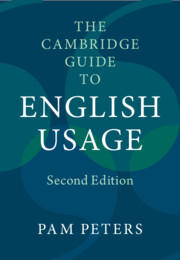Refine search
Actions for selected content:
3395756 results
The Cambridge History of Irish Poetry
- Coming soon
-
- Expected online publication date:
- October 2026
- Print publication:
- 31 October 2026
-
- Book
- Export citation

Introduction to Conservation Genetics and Genomics
- Coming soon
-
- Expected online publication date:
- August 2026
- Print publication:
- 31 August 2026
-
- Textbook
- Export citation
Musa Sadr: Modernity, Shi‘ism, and Islamic Humanism
- Coming soon
-
- Expected online publication date:
- August 2026
- Print publication:
- 31 August 2026
-
- Book
- Export citation
The Cambridge Introduction to Sumerian
- Coming soon
-
- Expected online publication date:
- August 2026
- Print publication:
- 31 August 2026
-
- Textbook
- Export citation
Embers of Reason
- The Secular Imagination and the Contemporary Indian Documentary
- Coming soon
-
- Expected online publication date:
- July 2026
- Print publication:
- 01 May 2027
-
- Book
- Export citation
The Afterlife of the Mausoleum of Halicarnassus
- Re-conceiving an Ancient Wonder in Early Modern Europe
- Coming soon
-
- Expected online publication date:
- July 2026
- Print publication:
- 31 July 2026
-
- Book
- Export citation

The Cambridge Guide to English Usage
- Coming soon
-
- Expected online publication date:
- July 2026
- Print publication:
- 31 July 2026
-
- Book
- Export citation
Constitutional Law in Contemporary America
- Institutions, Politics, and Processes
- Coming soon
-
- Expected online publication date:
- July 2026
- Print publication:
- 31 July 2026
-
- Textbook
- Export citation

The Cambridge Companion to Song China
- Coming soon
-
- Expected online publication date:
- July 2026
- Print publication:
- 31 July 2026
-
- Book
- Export citation
‘I Felt All This’
- Enslaved People's Emotional Lives in the Antebellum US South
- Coming soon
-
- Expected online publication date:
- July 2026
- Print publication:
- 31 July 2026
-
- Book
- Export citation
Roman Rural Archaeology
- Society, Economy, and Culture
- Coming soon
-
- Expected online publication date:
- July 2026
- Print publication:
- 31 July 2026
-
- Book
- Export citation
Relevant Logics
- Implication, Modality, Quantification
- Coming soon
-
- Expected online publication date:
- July 2026
- Print publication:
- 31 July 2026
-
- Book
- Export citation
The Secret History of Language
- Language Change Unraveled
- Coming soon
-
- Expected online publication date:
- July 2026
- Print publication:
- 31 July 2026
-
- Book
- Export citation
Crime and Punishment in India
- Police, Judiciary, and Access to Justice
- Coming soon
-
- Expected online publication date:
- July 2026
- Print publication:
- 31 July 2026
-
- Book
- Export citation
The Cambridge Handbook of Multiracial Youth and Families
- Coming soon
-
- Expected online publication date:
- July 2026
- Print publication:
- 31 July 2026
-
- Book
- Export citation
The Cambridge Handbook of Research Methods and Statistics for the Social and Behavioral Sciences
- Volume 3: Data Analysis
- Coming soon
-
- Expected online publication date:
- July 2026
- Print publication:
- 31 July 2026
-
- Book
- Export citation
African American Literature in Transition, 1940–1950
- Coming soon
-
- Expected online publication date:
- July 2026
- Print publication:
- 31 July 2026
-
- Book
- Export citation
High Current ESD
- Physics and Design
- Coming soon
-
- Expected online publication date:
- July 2026
- Print publication:
- 31 July 2026
-
- Book
- Export citation
Yugoslav Avant-Garde Music, 1945–1991
- Coming soon
-
- Expected online publication date:
- July 2026
- Print publication:
- 31 July 2026
-
- Book
- Export citation
Novalis's ‘Heinrich von Ofterdingen'
- A New Translation and Critical Study
- Coming soon
-
- Expected online publication date:
- July 2026
- Print publication:
- 30 June 2026
-
- Book
- Export citation
